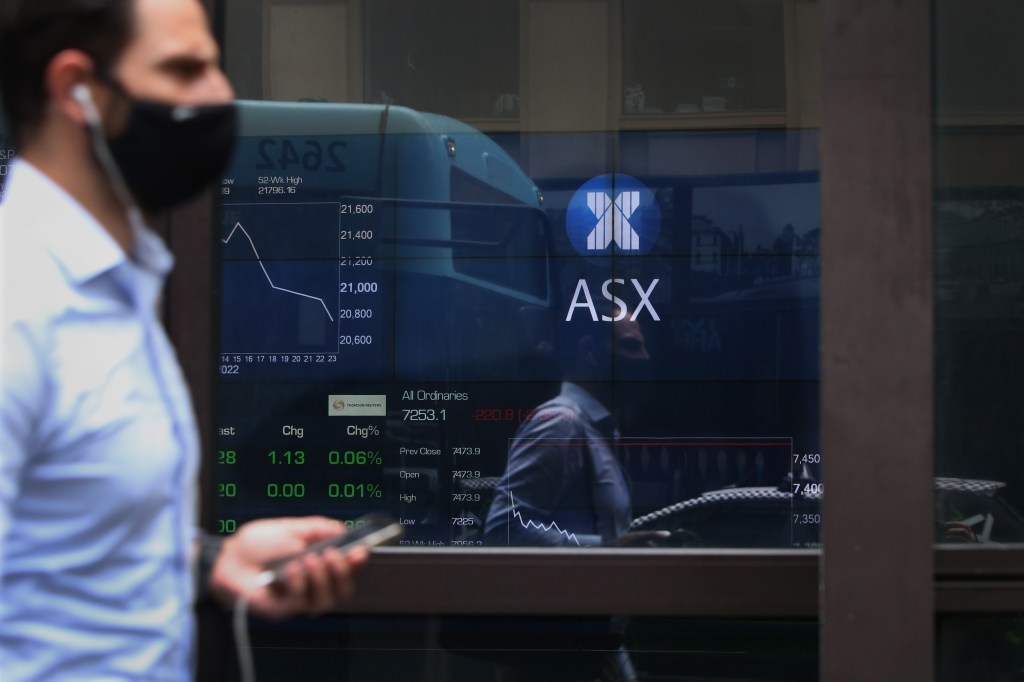ASX: The Australian Stock Exchange has halted its long-running and constantly-delayed blockchain project. The ASX said it would “derecognise capitalised software of $245 – $255 million”. That’s financial speak for saying, “that money is down the tube”.
What was the blockchain system about?
The project was commissioned in 2015 and the object was to swap out the current CHESS settlement and clearing system with blockchain technology. CHESS (Clearing House Electronic Subregister System) is the computer system used by the ASX to manage the settlement of share transactions and to record shareholdings.
CHESS is used by the ASX for settlement and clearing, the details of which are not relevant here, save to say that it employs the existing financial infrastructure which tends to be slow and cumbersome resulting in transactions taking days to settle and clear.
ASX: What is settlement and clearing?
When someone issues a sell order through their share brokerage account – like SelfWealth or Sharesies – a buyer on the other side needs to agree. Once that is done, a series of processes need to take place in order for the exchange of money to occur and for the transaction to be recorded.
Broadly speaking, these processes are settlement and clearance. Settlement refers to the actual exchange of money, whereas clearing involves updating the accounts of the trading parties.
A blockchain-based alternative was heralded as the solution for near-instant transactions, clearing and settlement. At the time, the ASX said: “The replacement of CHESS enables the industry to meet and respond to changing local and global markets, and promote further innovation through new levels of functionality, open standards and flexible technology”.
Turns out, the ASX wasn’t all that good at implementing new systems.
The cursed project
The project, which suffered numerous delays over a period of seven years, was finally brought to a halt following an unequivocally scathing report by consulting firm Accenture who was commissioned in August to evaluate what on earth was causing the hiccups.
It found that the system was only 63 per cent complete, and that the timeline to completion remained “uncertain”. Furthermore, it highlighted the project’s lack of readiness, “complexity in the integrated solutions”, and severe project governance issues.
The 47-page indictment makes it abundantly clear that ASX dropped the ball on this one, citing “inefficiencies”, “siloed execution” and “misaligned views of status on delivery progress, risks and issues”. The report is comprehensive, so if software implementation is your game, you’re in for a treat. For those who aren’t, the long and short of it is that Accenture found that the project was a dismal and costly failure.

Where to from here?
ASX said that it will “reassess” all aspects of the blockchain project, saying it would “pause” all current activities pending the completion of Accenture’s report (yes, there’s more to come) and the findings of an internal assessment. ASX Chairman Damian Roche recognised that the “significant challenges” needed to be addressed:
“We began this project with the latest information available at that time, determined to deliver the Australian market a post-trade solution that balanced innovation and state-of-the-art technology with safety and reliability”.
“However, after further review, including consideration of the findings in the independent report, we have concluded that the path we were on will not meet ASX’s and the market’s high standards”, Roche stated.
Despite the mess, the ASX said it is “keen to embrace technology”, but that it “[had] some work to do before updating and consulting with stakeholders more deeply.”
In a joint statement, ASIC (Australian Securities and Investments Commission) and the Reserve Bank of Australia called the development a “significant setback” in the replacement of critical national infrastructure.
ASX and ASIC
ASIC chair Joe Longo said that “ASX has rightly recognised that pausing the program while it revisits the technology design for the CHESS replacement was a necessary decision” and that, [it had failed] to demonstrate appropriate control of the program to date”. This, Longo argued, “undermined legitimate expectations that the ASX [could] deliver a world-class, contemporary financial market infrastructure”.
In conversation with The Chainsaw, digital assets legal specialist Michael Bacina of Piper Alderman said:
“It’s important to note that the ASX project has not been cancelled due to any underlying problem with blockchain or distributed ledger technology. Software development is hard, and developing software which has to meet the needs of detailed regulation and stakeholder needs is even harder. Distributed ledger technology builds pose additional complexities beyond what is already a significant challenge.”
In short, Bacina argues that the issue isn’t blockchain as much as the execution of the project itself. Ultimately, the proof will be in the pudding as to whether the issue is one of system architecture (i.e. blockchain isn’t appropriate) or if it was just a matter of poor implementation.





